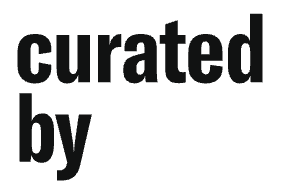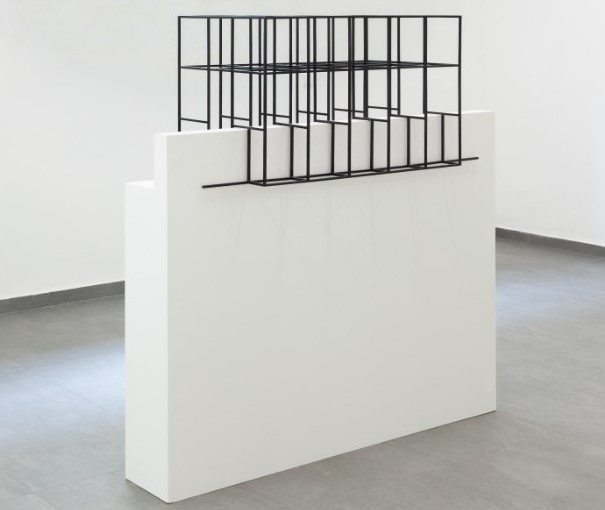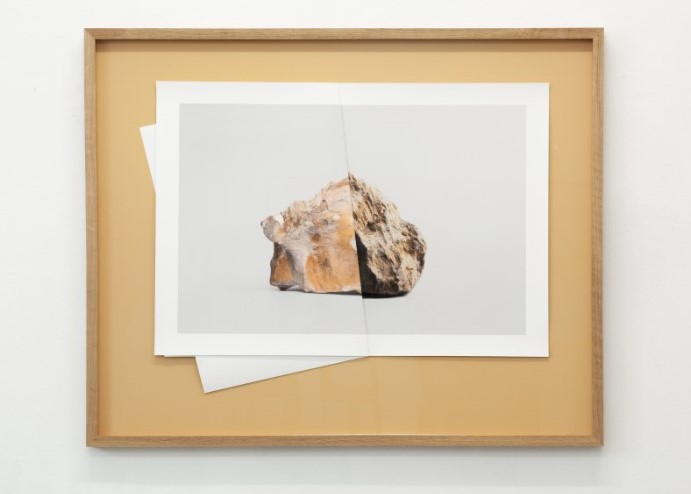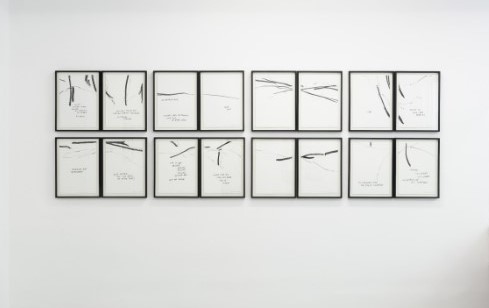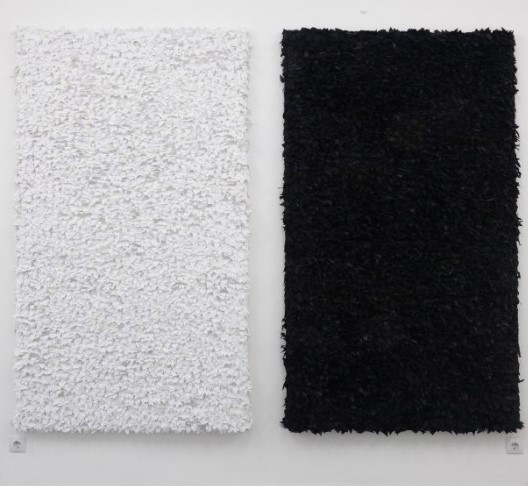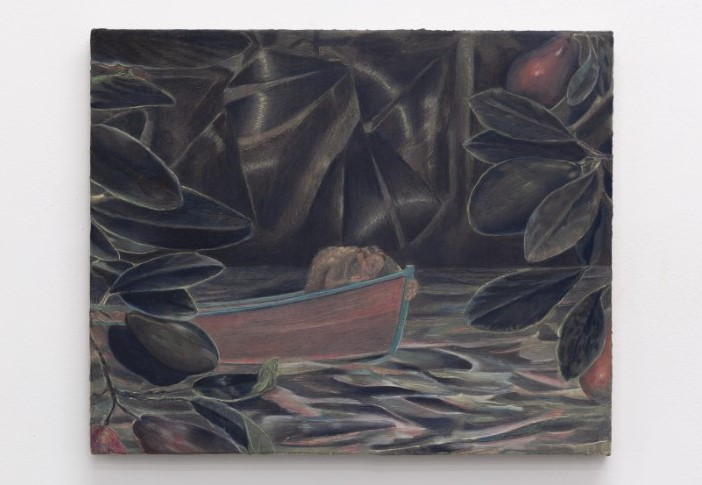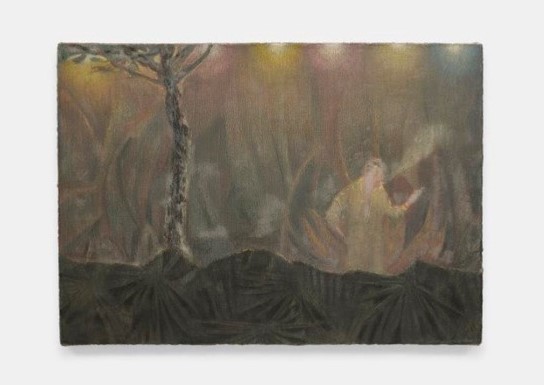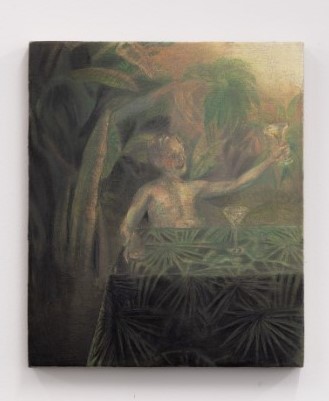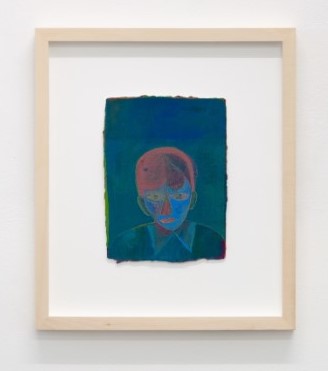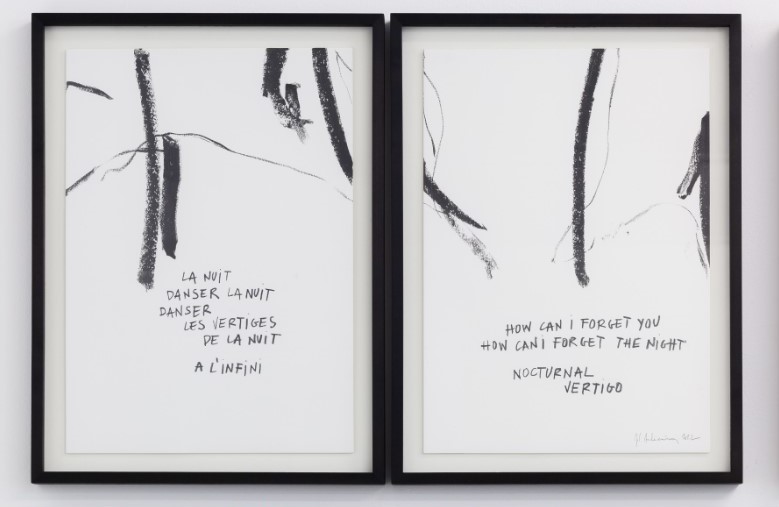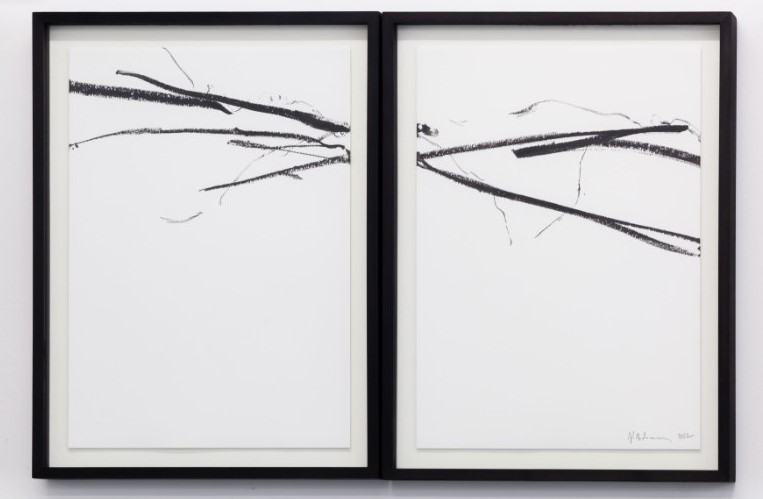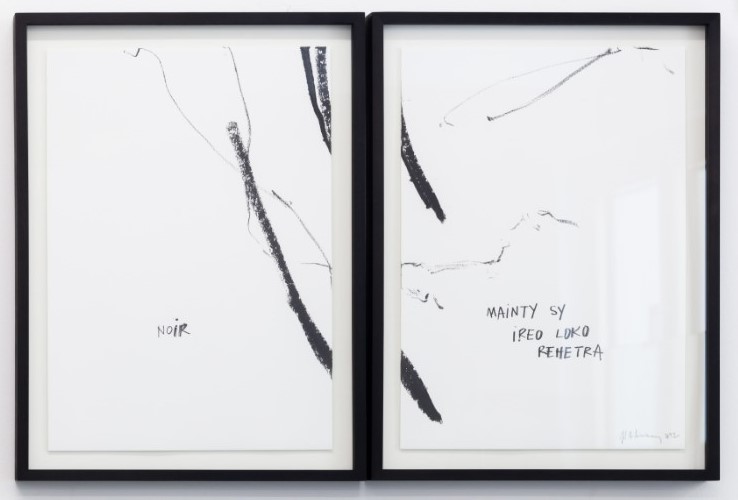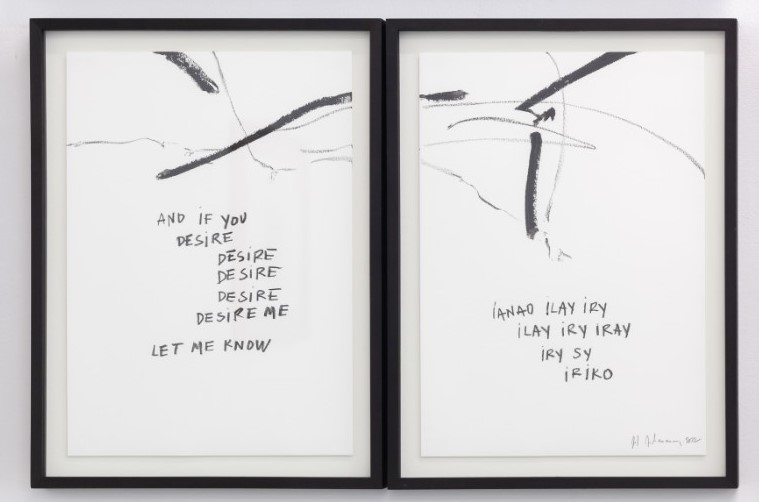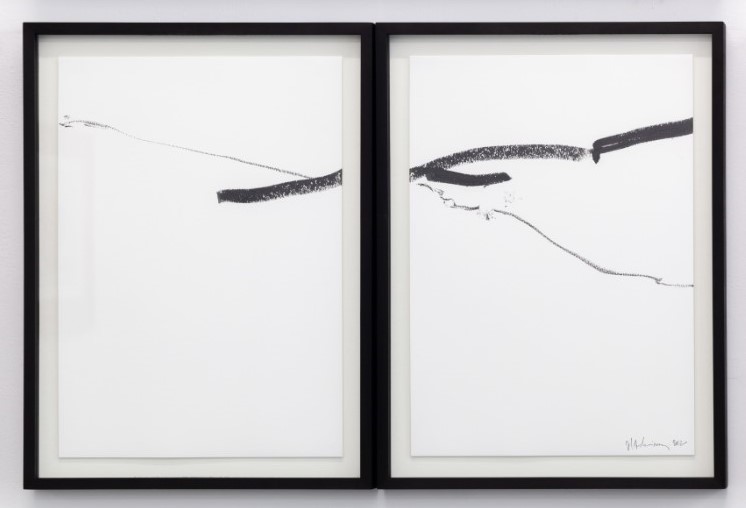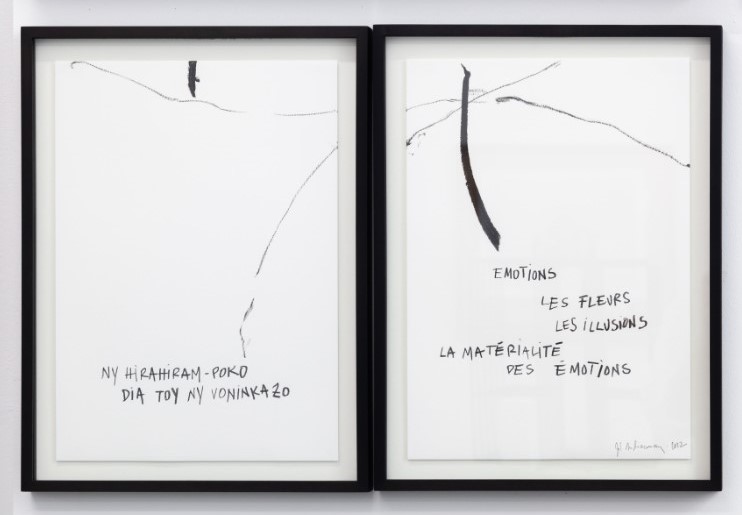VIN VIN Gallery curated by Kami Gahiga
„Peripheral Sun“

www.vinvin.eu
Curator(s):

Kami Gahiga is a London-based independent art curator and a member of the Baer Faxt art advisory. She holds a first distinction Master's degree from the Sotheby's Institute of Art in London. Kami has curated and contributed to a number of international art exhibitions in Europe, America and Africa. She is also a regular contributor to art publications, talks and conferences. Her main focus is on contemporary art which reflects a global art view, with a special emphasis on the African art scene.
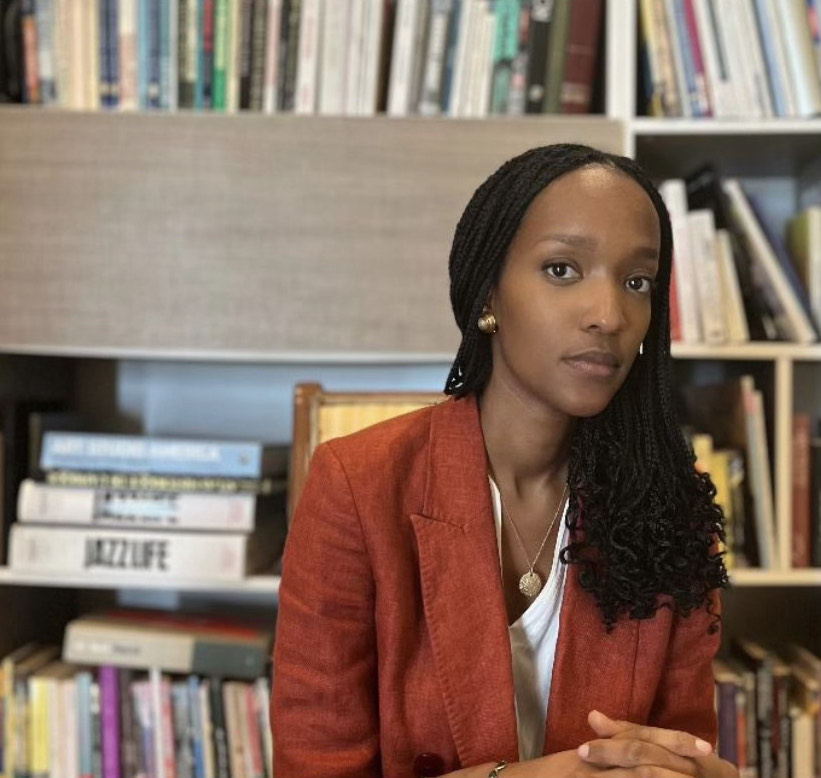
Artist(s):
- Joël Andrianomearisoa
- Kapwani Kiwanga
- Marin Majic
- Maja Ruznic
Exhibition text
More
Titled Peripheral Sun, the exhibition at VIN VIN gallery charts a new configuration of the East by approaching Dieter Roelstraete’s selected theme with alternative methods of mapping in mind. The concept of orientalization of the East introduced in the last section of ‘’Kelet’’, coined by Palestinian-American scholar and writer Edward D. Said, designates the system of representation the West has traditionally exerted on the East. A term rooted in epistemologies and myths most evident during the Cold War and revived by Russia’s invasion of Ukraine. This outlook also came to describe not only the perceptions of Western Europe regarding Eastern Europe, but also towards other non-Western societies, keeping them at the periphery both physically and symbolically. The city of Vienna in which the exhibition takes place has historically been the most Eastern point of Western Europe and the most Western point of Eastern Europe, standing in-between the push and pull of historic and religious frontiers.
The exhibition features the artworks of four artists: Joel Andrianomearisoa, Kapwani Kiwanga, Marin Majic and Maja Ruznic. The selected artists hail from the Eastern Coasts of Africa and the Balkan peninsula, yet each one has a distinctive approach in relation to aspects of nationalism and holds no central attachment to one specific identity or country. The exhibition explores how the cartesian and symbolic meaning of borders erode with displacement and migration. Themes of longing, nostalgia, the in-between and melancholy manifest in each of the artists’ works through a multiplicity of media: painting, installation, drawing, and collage.
Peripheral Sun initiates a debate about whose compass is acknowledged when we think about the East, considering the bipolar order which halted with the fall of the Berlin Wall and recognizing the different poles of influence that exist today.
Peripheral Sun lays out vectors for a multi-perspectival outlook on geography and addresses how one map can represent a different geographical area, depending on the vantage point of the onlooker. As inspiration, Peripheral Sun takes Alighiero Boetti’s Mappa di Mundo series that the Arte Povera movement’s central figure developed throughout his career.
The brightly coloured maps designed by Boetti and embroidered by Afghan craftswoman portray each country by its flag and illustrate the geopolitical realities of the world from the early 1970s to the 1990s. The artist’s maps are not comprehensible without their frames as the trims are the points of reference which contain dates and details relating to the map. These inscriptions relate to Boetti’s dual concepts of ordine e disordine (order and disorder) as there is no order for reading the trim, the viewer must look in multiple directions laid at the fringes to decipher the maps. Echoing the intention and title of this exhibition, the maps are read first from the periphery (trims) before engaging with the centre.
Peripheral Sun foregrounds a multi-perspectival outlook by focusing on narratives which encompass a decentred and shifting flux of ideas. It brings into light narratives from the traditionally designated margins, some lesser known, some that may have been forgotten or hidden.
The layout of the exhibition design relies on the viewer to be accustomed by alternative vantage points and to approach the exhibition without a specific linear route, it creates an open network of exchange with no set trajectory.
„Elsewhere“ is only ever a form of „here“ The Breeze of the Red Sun Maurice Ramakoza (1931-2010), Malagasy poet and diplomat.
Born in 1977 in Madagascar, Joël Andrianomearisoa lives and works between Paris and Antananarivo. A graduate of the École Spéciale d’Architecture, his visual language often begins with fluid pencil sketches and is guided by poetry or spoken words. The artist was chosen to represent Madagascar at the 58th Venice Biennale in 2019. At the Arsenale, Andrianomearisoa presented »I Have Forgotten the Night«, a majestic and poetic installation made of cascades of black collage paper.
Black is central to Andrianomearisoa‘s work, he is drawn to the color’s formal and evocative possibilities. His commitment to the black is expressed across a multiplicity of media, from sculpture and drawings to textile and installations. The three artworks exhibited in Peripheral Sun embody the artist’s long -tanding appreciation for its ability to address the deepest human emotions such as veiled desires, solitude, absence and mourning.
The elegant precision and simplicity found across Andrianomearisoa’s œuvre is conveyed in his three-dimensional structure Maison Imaginaire which echoes the artist’s training as an architect through his engagement with space and environment.
Maison Imaginaire (2021) is a model of Andrianomearisoa’s monumental metallic sculpture that the artist was commissioned to realize in Aigues-Mortes, France. His structure elegantly floated between two of Aigues-Mortes’ historic towers. The city's fortified walls and port were built in the 13th century by King Louis IX to establish a trade route to the East, and witnessed the departure of the seventh and eighth Western crusades. Maison Imaginaire evokes the paradox of human desires: to root oneself through built structures while simultaneously desiring to escape, to break walls and barriers. Robust at first glance given its steel composition it is simultaneously fragile, ambiguous, and open-ended.
Étoffe des Songes (2016) is a black and white diptych that reflects the artist’s fascination for textiles‘ malleable qualities which he declines through the layering of various shades of black and white. Madagascar is home to some of the finest silk and cloth production centers. The diptych equally demonstrates Andrianomearisoa‘s investigation of contrasting elements and duality. On a smaller physical scale but with equal resonance are his drawings Soratra (2022), which fuse the concerns of his past projects and his installation I Have Forgotten the Night at the Venice Biennale. It comprises a series of 8-diptychs depicting texts and poems written in Malagasy, French and English, realized specifically for Peripheral Sun. Andrianomearisoa’s welding of contrasts capture the balanced interplay of opposite elements. Peripheral Sun’s theme echoes Joel Andrianomearisoa’s ongoing exhibition at the Zeitz Mocaa museum in Cape Town ‘’The Five Continents of All our Desires’’, where the artist recreated the five continents with thin and delicate paper but added two new continents, inviting the spectator to form and consider a new territory. Soratra, Maison Imaginaire, and Étoffe des Songes impart the artist’s ongoing search for zones of engagement and desires without physical or conceptual separations. He builds a world view that embraces fragility and offers new possibilities for contact.
Kapwani Kiwanga is a Canadian-born and Paris-based artist of Tanzanian descent. Trained as an anthropologist before turning to visual arts, Kiwanga draws upon a research-based aesthetic that weaves together archival material, photography, video, performances, and complex installations. Kiwanga studied both anthropology and comparative religion at McGill university in Canada before moving to Paris for a postgraduate degree at the Beaux-Arts de Paris.
Her artworks exhibited at VIN VIN gallery are part of her seminal Subduction Series in which the artist paired photographs of disparate rock specimens from the collection of the National Museum of Natural History in Paris that she folded to shape into a new entity.
Subduction rocks constitute areas where oceanic and continental plates converge with a tectonic plate, shifting over or under the other. Kiwanga’s arrangements feature images of rocks from the coast of Africa with others from Europe, echoing the anticipated Pangaea Proxima in 300 million years which supposedly should see the rise of a new super-continent through the collision of tectonic plates, causing the European continent to slip under Africa. In early geological times, Pangea formed one single continent and incorporated almost all the landmasses of the earth – the continent of Europe was contiguous with Africa, Asia, and South America.
Kiwanga’s subduction rocks play with this geological probability, proposing a new continental configuration where two continents and their inhabitants become geographically connected. Her artworks become exit strategies for viewers to discover new narratives.
Kiwanga is the recipient of the 2020 Marcel Duchamp prize and the 2018 Frieze Award. She currently has a solo show at the New Museum in New York and is exhibited at the 59th Venice Biennale this year, the Milk of Dreams, curated by Cecilia Alemani and whose installation explores fracking and climate change through textile paintings and enigmatic abstract sculptures.
Born in 1979 in Frankfurt, Germany, Marin Majic lives and works in Brooklyn, New York and studied at the Academy of Visual Arts in Zagreb, Croatia. Majic‘s intricate and textured compositions are the result of a labour-intensive mark- making technique, and are rendered in colour pencils, oil colour, wax and marble dust. Off Course, New Day, New Start and With Yourself illustrate enigmatic figures with averted gazes, immersed in verdant foliage. When asked about the source of his imagery, Majic cites a combination of found images, personal memories and sheer imagination. The artist draws upon various compositional and painterly conventions, from Flemish Old Masters‘ slightly distorted proportions, 19th-century German romanticism inclination for allegorical landscapes and depictions of the self within the immensity of nature, to contemporary culture.
A profound sentiment of longing and muted uncertainty pervades Majic‘s saturated compositions which form connections far beyond the framing of delineated spaces. Densely layered, they evoke the feelings of individuals uprooted from formative attachments, mirroring the artist‘s multicultural background. Majic’s dreamlike, fantastic and saturated pictures evoke European imaginary about Eastern Europe as a place imbued with myths, mystery and wonder. His figures resist any specific readings, and rather incite the viewers to wander and free themselves from fixed interpretations.
Marin Majic is represented by Nino Mier gallery and held solo exhibitions at Galerie Isa, Mumbai, Marc Straus Gallery, New York, and ARNDT Fine Art, Berlin. His paintings have also been included in group exhibitions organized by Mana Contemporary, Jersey City, the Knoxville Museum of Art, and the Hudson Valley Center for Contemporary Art, Peekskill, NY.
Maja Ruznic (b. 1983 Bosnia and Hercegovina) is a Bosnian-American artist based in New-Mexico (USA). She studied Psychology and Art at UC Berkeley and received her MFA from the California College of the Arts. Ruznic’s ethereal paintings are informed by the artist’s memories of trauma and displacement. She fled Bosnia with her mother in 1992 to escape the violence and ethnic violence committed against Bosnian Muslims (1992-1995).
Ruznic moved and lived across Europe, including Croatia and Austria, before settling in America. Her recurrent displacements instilled a feeling of uprootedness in her. Ruznic’s formal vocabulary brings to light fragmented memories that otherwise would remain obscure. In Peripheral Sun, Maja Ruznic presents a quiet selection of paintings executed in a palette of dark blue, yellow, green and reds. She begins her canvases by applying thin washes of paint allowing each hue to come through, and enjoys playing with usual color interpretations to alter the viewer’s perception. Yellow which is commonly associated with light and warmth is used to evoke a cold and distant atmosphere in Blue Dawn. In Son, the application of red, a conventional indicator of intensity and alarm, is paired with hues of greens and blues to appear light and reassuring.
Blue Dawn is infused with nostalgia and a feeling of melancholy. Ruznic added a very thin yellow line which she formed into little triangles. The painting recalls the morning Ruznic left Bosnia, as she saw the mountainous town where she grew up become smaller and smaller before fading into the horizon. Triangles are the artist‘s vantage points of reference and have become part of her visual language.
Blue/Green Son is a delicate painting of a person whose hollow and distant gaze makes him appear hollow and distant. Over the last three years, Maja Ruznic started titling her paintings as either Son, Mother or Daughter. According to the artist, this decision may be informed by her recently becoming a mother and realizing that human beings are first daughters, sons, mothers and fathers. She also wonders whether this decision to title her work this way may not be influenced by her attempt to connect with her father, a Bosnian Serb, whom she has never met and has only seen in an old photograph.
Maja Ruznic faces her dark past and considers vulnerability and feelings of nostalgia as essential sentiments for humans to acknowledge. Invoking these difficult memories and giving them life through painting also alludes to a desire to keep the past alive, pay tribute to the victims and engage in conversations about a region bruised by history. Blue/Green Son and Blue Dawn reflect her commitment to color, shape and form as definers of identity over the stark borders and demarcations of nationalism.
Maja Ruznic is represented by Hales gallery (London) and Karma gallery (New York). In 2018, Ruznic was a recipient of the Hopper Prize. In 2019, Dallas Museum of Art, TX, USA and The US Embassy in Sarajevo, Bosnia & Herzegovina acquired her work for their collections. In 2021, Ruznic had her debut institutional show In the Silver of the Sun at The Harwood Museum of Art, Rosewell, NM, USA.
Peripheral Sun departs from nation-based mappings of our usual imagination of what West and East mean and lays out vectors for a multi-perspectival outlook. It also sheds a light on how cartesian and symbolic meaning of borders erode with displacement and migration. Joel Andrianomearisoa, Kapwani Kiwanga, Marin Majic, and Maja Ruznic epitomize the notion of longing which stems from feeling from neither here nor there. The exhibition grew out of a desire to expand the semantic tangle around what the East entails, to decentre the Western European gaze on geography and its ideological frameworks, and to encompass global ‘’Eastern’’ and temporal diversities. The exhibition yields a reflection on a shared social and cultural history unbound by boundaries and stringent demarcations. Rather, it seeks to remind the viewer that the essential markers are universal human emotions that connect us beyond borders.
Kami Gahiga

